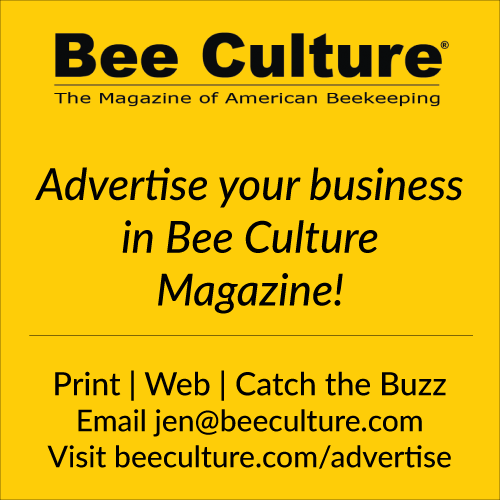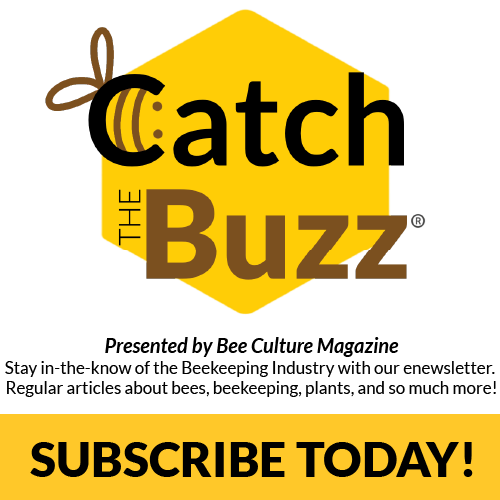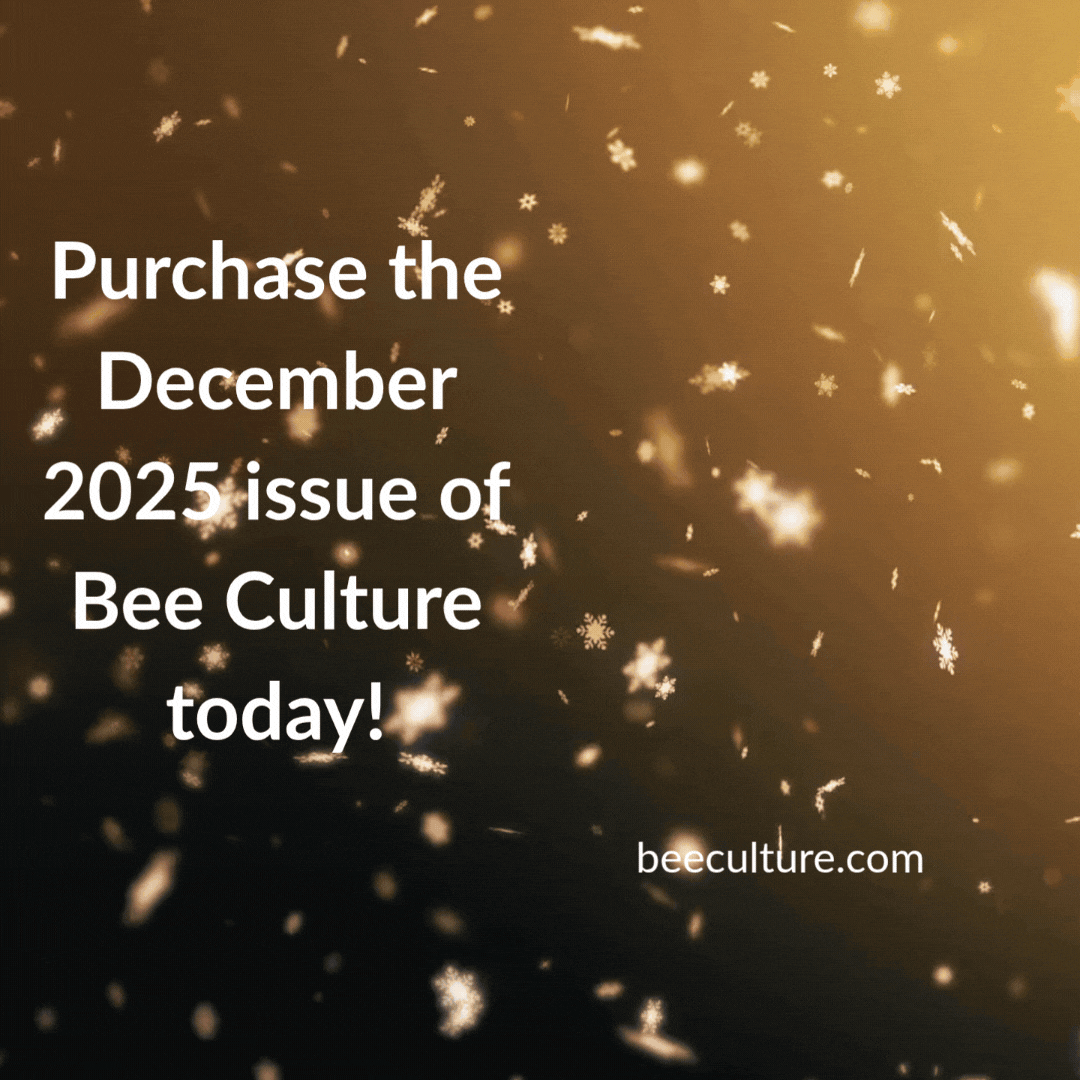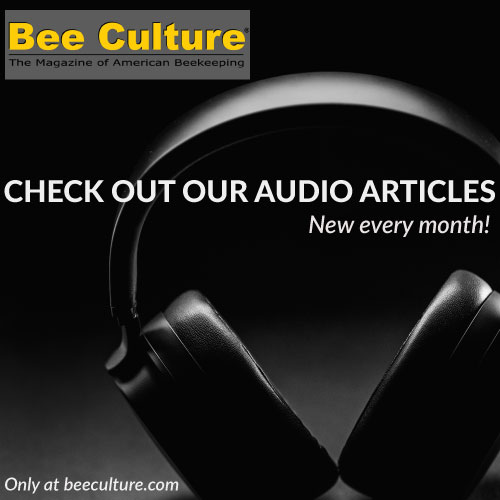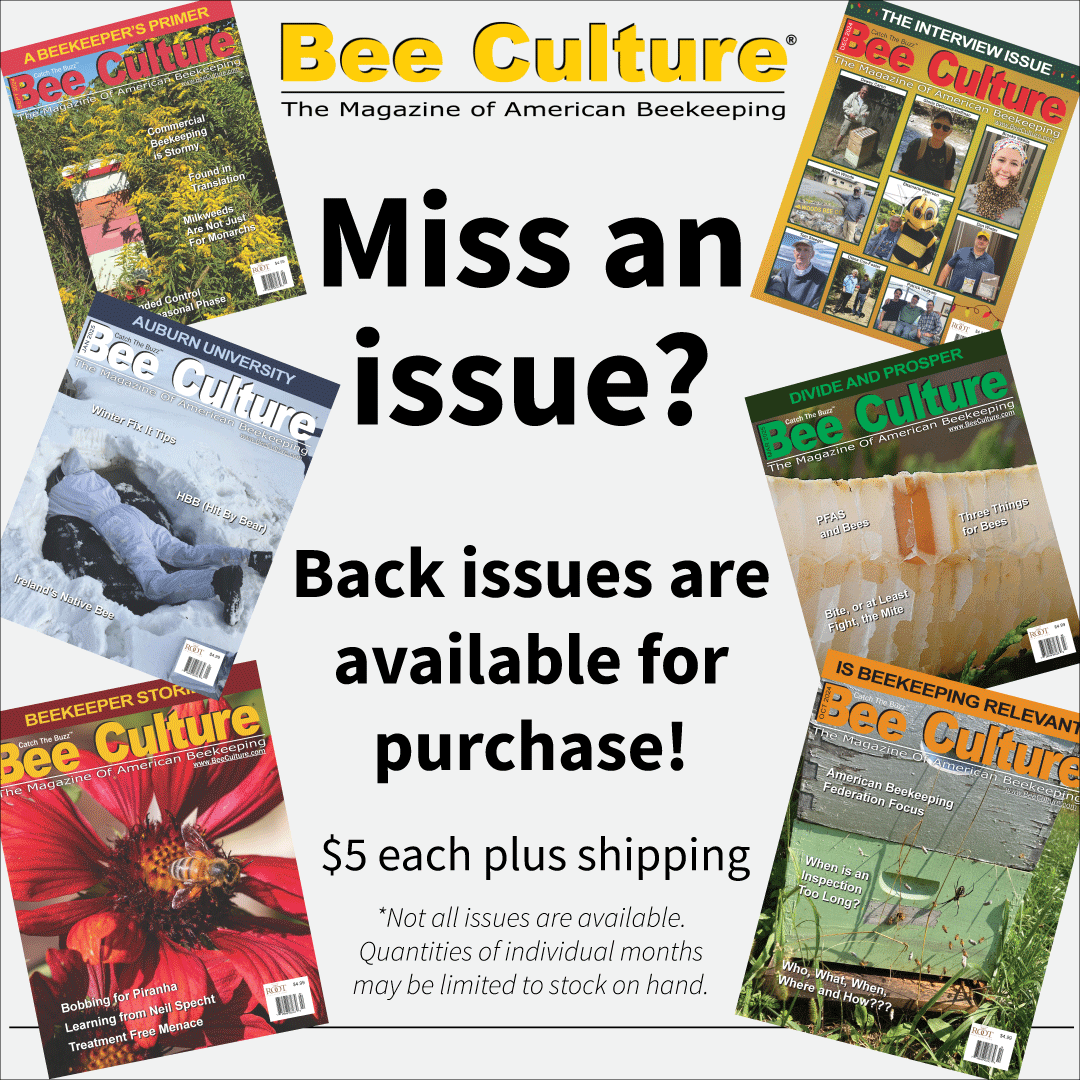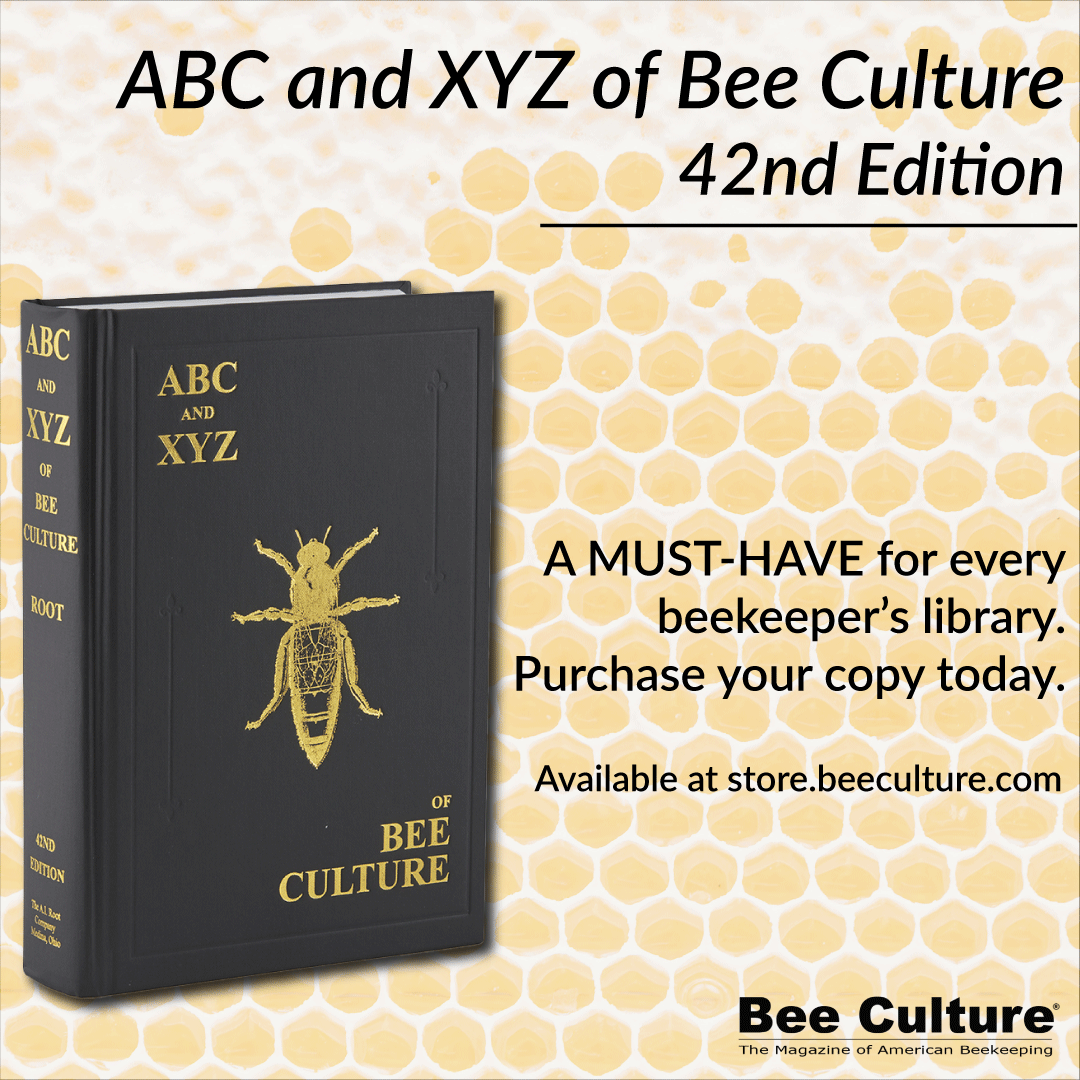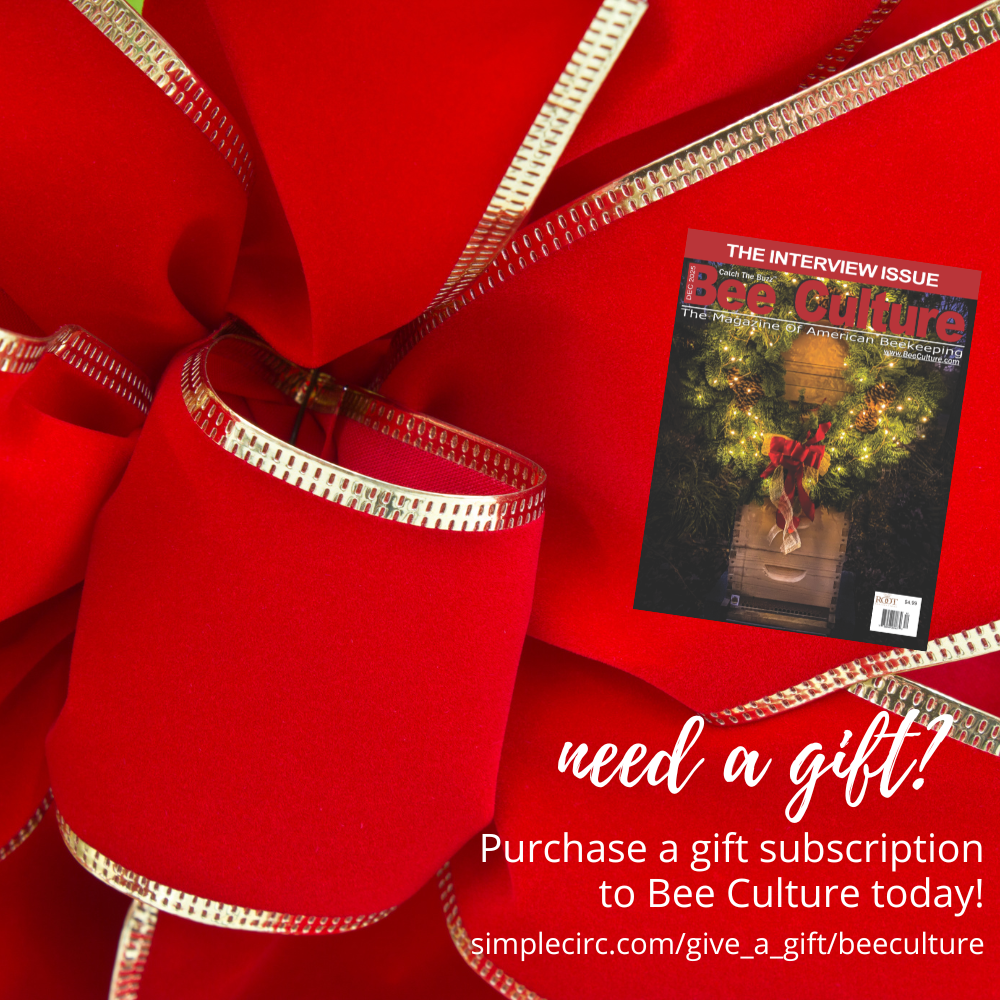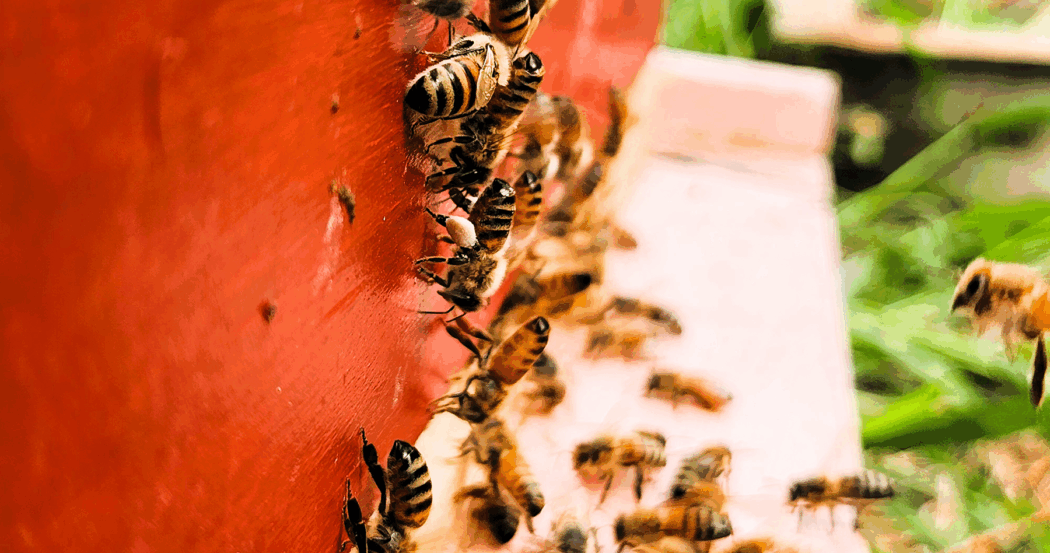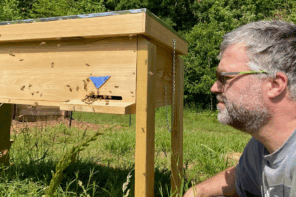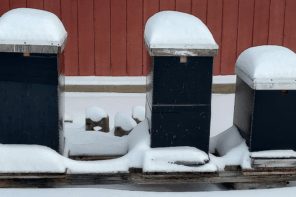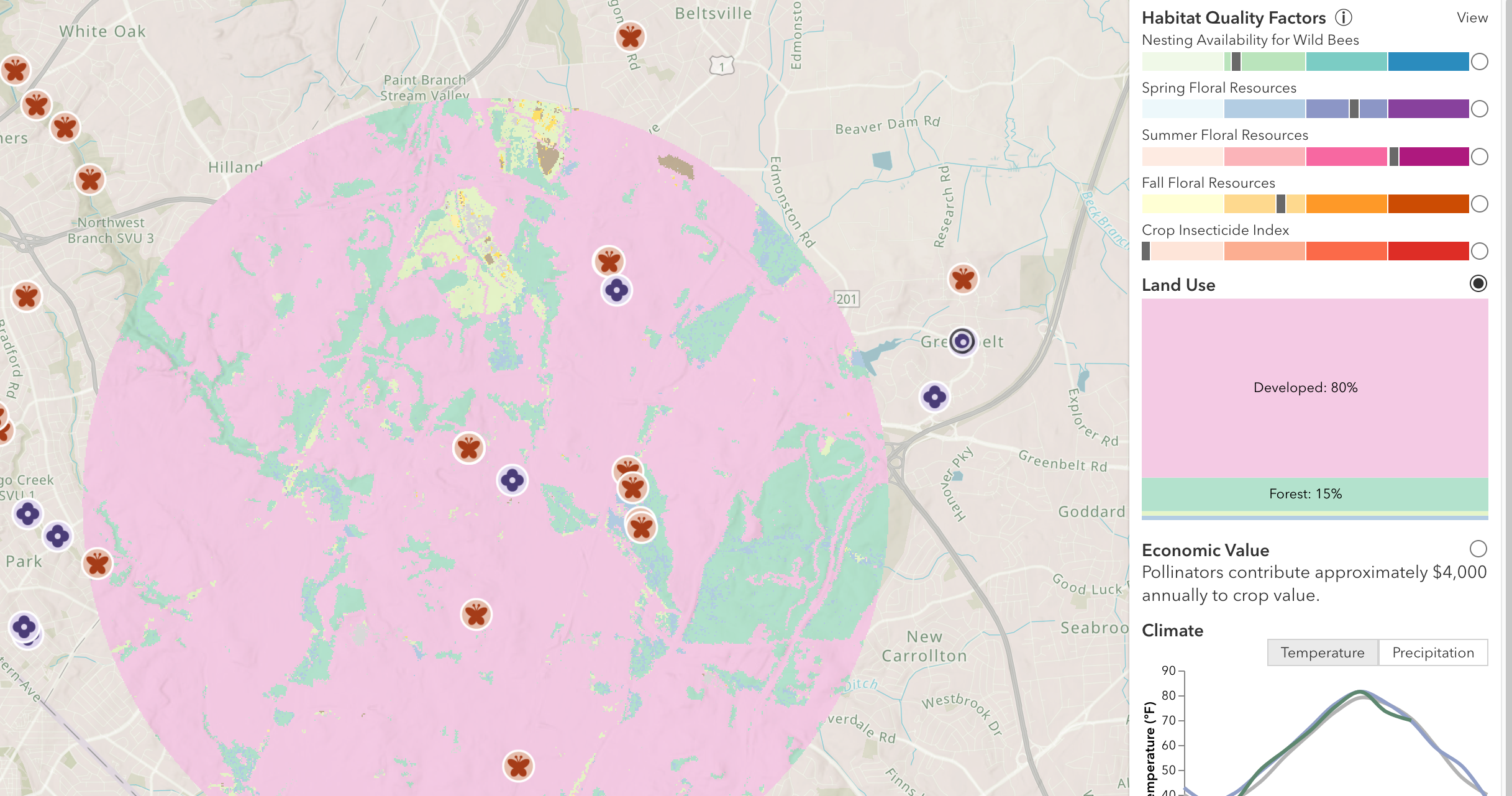Click Here if you listened. We’d love to know what you think. There is even a spot for feedback!
Read along below!
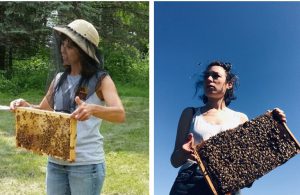
Becky Masterman earned a PhD in entomology at the University of Minnesota and is currently a host for the Beekeeping Today Podcast. Bridget Mendel joined the Bee Squad in 2013 and led the program from 2020 to 2023. Bridget holds a B.A. from Northwestern University and an M.F.A. from the University of Minnesota. Photos of Becky (left) and Bridget (right) looking for their respective hives. If you would like to contact the authors about your lovely lawns, please send an email to mindingyourbeesandcues@gmail.com.
Minding Your Bees and Cues
Come Hither!
By: Becky Masterman & Bridget Mendel
We haven’t been shy about declaring our love for colonies emitting the lemony scent of Nasonov pheromone from the ends of their abdomens. We are admittedly obsessed with this poetic orientation scent and were really on the fence about whether to write a long poem about the odor of lemon skins/dancers minutely oriented to the sun and all that rot* — or a scientific deep dive into orientation pheromone as it pertains to colony function. But ultimately science is easier than poetry so here goes.
Wikipedia’s Nasonov’s gland page says that while the scent producing gland is named after Nikolai Nasonov, who first described it in 1883, Mr. Nasonov was a bit off about its function in honey bees. He determined that the newly identified gland was perspiration! This was not corrected until 17 years later when Willian Sladen determined that it was a pheromone source. But lucky Nasonov remains forever associated with this gland.
Have you smelled the attractant pheromone? We encourage you to familiarize yourself if you haven’t. Next time you see your bees cover the front of a hive, exposing the gland in between the last two abdominal tergites and releasing Sladen’s Nasanov gland pheromone, don your veil and get close to the chemical release! Seven volatile chemicals make up the orientation pheromone (reviewed in Gryboś (2025)). The combination of these seven make lemony scented goodness and some of these terpenoid compounds have detectable odors: geraniol and nerol – sweet rose odors, (E)-citral and (Z) citral – lemon-like odors and (E,E)-farnesol – delicate floral odor.
We were intrigued to learn that while Apis cerana (another honey bee species) also has a Nasonov gland, the pleasantly scented terpenoid compounds are absent in the Asian honey bee. Instead scientists are exploring whether the Nasonov gland and produced chemicals serve as a necromone in A. cerana (Klett et al., 2021). A necromone is a chemical associated with death or dying. This signal would help the A. cerana workers know to remove dead workers from the colony and thus serve a social immunity function.
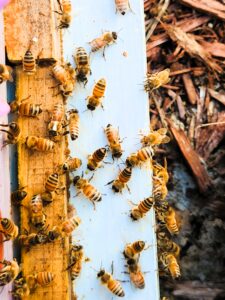
A view of everted Nasonov glands from above. These workers are using their wings to spread the volatile pheromone for better detection. Photo credit: Rebecca Masterman
Back to the front of your hive boxes filled with Nasonov releasing bees! You can’t talk about honey bee orientation flights without mentioning Nasonov pheromone (Masterman and Mendel, 2024). Well actually, you can. An early report about orientation behavior in honey bees does not utilize Nasonov’s name in the description of the gland or pheromone. Instead, Ribands and Spears (1953) noted the important role of the scent gland and scent-dispersing bees when they experimented with changing nest entrance locations in their hives. Your takeaway? Honey bees use Nasonov pheromone to guide newly flying colony members (workers, drones and queens!).
If there is a disruption in the entrance (like a beekeeper standing in front of it or changing the colony configuration during inspections), the workers respond by landing at the entrance and fanning Nasonov pheromone to aid the other colony members in their search for home (other colloquial names for the pheromone are the “come hither,” “assembly,” or “orientation” pheromone), So if you see experienced pollen foragers fanning at the entrance and everting their scent gland, pollen baskets full, it’s probably because something about the hive configuration or orientation has shifted since their last flight.
Nasonov pheromone is important in the colony reproductive swarming process. Schmidt (1993) reviewed the literature demonstrating the importance of scout bees using Nasonov to communicate potential nest sites and attract swarming bees to a cluster. Through experiments, Schmidt identified the potential for this pheromone to recruit scouts to experimental nest locations and thus supported the use of Nasonov pheromone as a swarm lure.
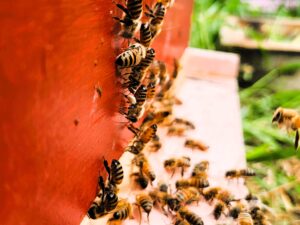
You might see pollen foragers releasing Nasonov pheromone after they return to the nest prior to unloading pollen. Watch your colonies to see how inspections might trigger this pheromone release. Photo credit: Rebecca Masterman
Beekeeper use of Nasonov pheromone as swarm lures is a recently developed and important beekeeper tool (Borst, 2019) and researchers are still improving the process. A Greek study demonstrated high efficacy of mixing the volatile chemicals in paraffin gel (produced by ANEL in Greece) as a way to lure swarms to easily accessible apiary locations (Papachristoforou, 2024). This method and recipe had high efficacy. The tested lures attracted 75 swarms (93.83%) with the gel lure attracting 69.13% of them.
While most of us don’t want to risk the loss of half of our bee population and laying queen, how many are providing a place for these ‘escaping’ swarms to land? Have you started your to-do list for 2026? Maybe a swarm lure is on it? We love the work of Papachristoforou who used fence posts for some of the lure stations, but of course a box with frames might be more convenient for transport!
Researchers are looking for a way to use this attractive chemical to increase pollination rates. In an effort to lure more honey bees to flowers, an attractant containing Nasonov pheromone was used on cherries, blueberries and apples in a multi-year Michigan study (Williamson et al., 2018). While no increases were noted in this study, a more recent study in China baited pear trees with synthetic Nasonov pheromone and observed 2.5 more honey bee visitation to baited trees (Li et al., 2023).
Our apologies to those of you who can’t smell Nasonov pheromone. Some people’s genetics simply don’t line up for this experience. Others may be able to detect it but not find it pleasant! Everyone’s olfactory lifestyle is different. But can we all agree that beekeeping includes proximity to some of the best scents ever? Warm wax, pine wood, honey, smoke…no wonder bees are the most anthologized animals in the history of poetry!
*maybe next time?
Resources and References
Borst, P. (2019). New Beekeeping Developments In The Past 100 Years. Bee Culture, 147(3), 63–69.
Gryboś, A. (2025). The Pheromone Landscape of Apis mellifera: Caste-Determined Chemical Signals and Their Influence on Social Dynamics. Molecules: A Journal of Synthetic Chemistry and Natural Product Chemistry., 30(11), 2369–2391.
Klett, K., Zhang, J., Zhang, Y., Wang, Z., Dong, S., & Tan, K. (2021). The Nasonov gland pheromone as a potential source of death cue in Apis cerana. Journal of Insect Physiology, 131, Article 104238. https://doi.org/10.1016/j.jinsphys.2021.104238
Li, Q., Sun, M., Liu, Y., Liu, B., Werf, W., Bianchi, F. J. J. A., & Lu, Y. (2023). Synthetic Nasonov gland pheromone enhances abundance and visitation of honey bee, Apis mellifera, in Korla fragrant pear, Pyrus sinkiangensis. Agricultural and Forest Entomology, 25(3), 365–374. https://doi.org/10.1111/afe.12556
Masterman, B., & Mendel, B. (2024). Minding Your Bees And Cues: First Flights. Bee Culture, 152(4), 26–27.
Papachristoforou, A. (2024). Assessment of advanced lures through gel and spray application for the attraction of honey bee swarms. Journal of Apicultural Research, 63(5), 856–858. https://doi.org/10.1080/00218839.2023.2168402
Ribands, C. R., & Speirs, N. (1953). The adaptability of the homecoming honeybee. British Journal of Animal Behaviour, 1(2), 59–66. https://doi.org/10.1016/S0950-5601(53)80055-9
Schmidt, J. O. (1994). Attraction of reproductive honey bee swarms to artificial nests by Nasonov pheromone. Journal of Chemical Ecology, 20(5), 1053–1056. https://doi.org/10.1007/BF02059741
Williams, I. H., Pickett, J. A., & Martin, A. P. (1981). The Nasonov pheromone of the honeybeeApis mellifera L. (Hymenoptera, Apidae). Part II. Bioassay of the components using foragers. Journal of Chemical Ecology, 7(2), 225–237. https://doi.org/10.1007/BF00995745
Williamson, J., Adams, C. G., Isaacs, R., & Gut, L. J. (2018). Evaluation of Nasonov Pheromone Dispensers for Pollinator Attraction in Apple, Blueberry, and Cherry. Journal of Economic Entomology, 111(4), 1658–1663. https://doi.org/10.1093/jee/toy107
https://en.wikipedia.org/wiki/Nasonov%27s_gland
https://www.sciencedirect.com/topics/chemistry/terpenoid
https://pubchem.ncbi.nlm.nih.gov/
https://www.anel.gr/en/about-us

